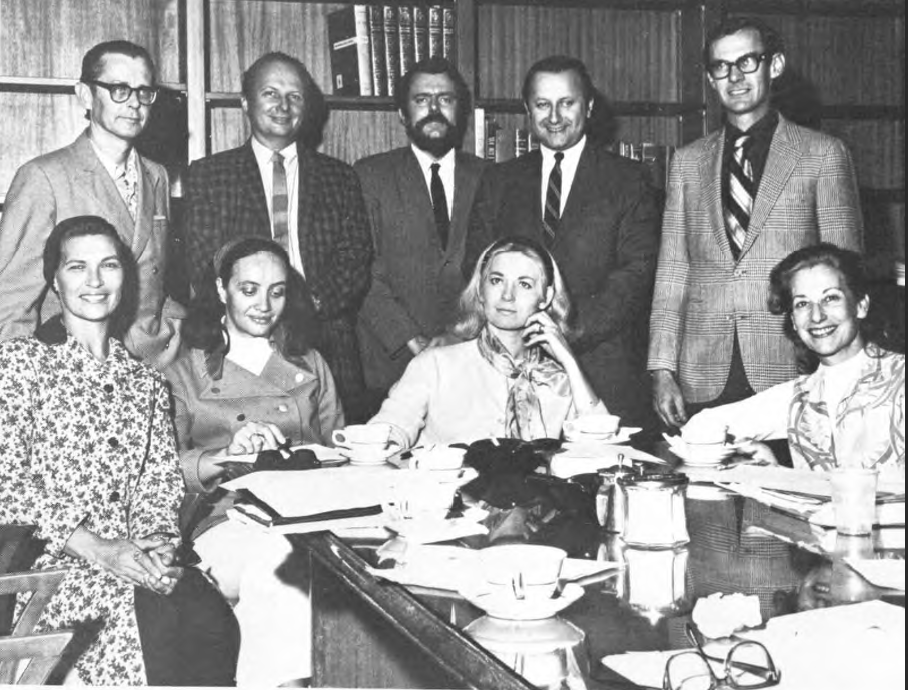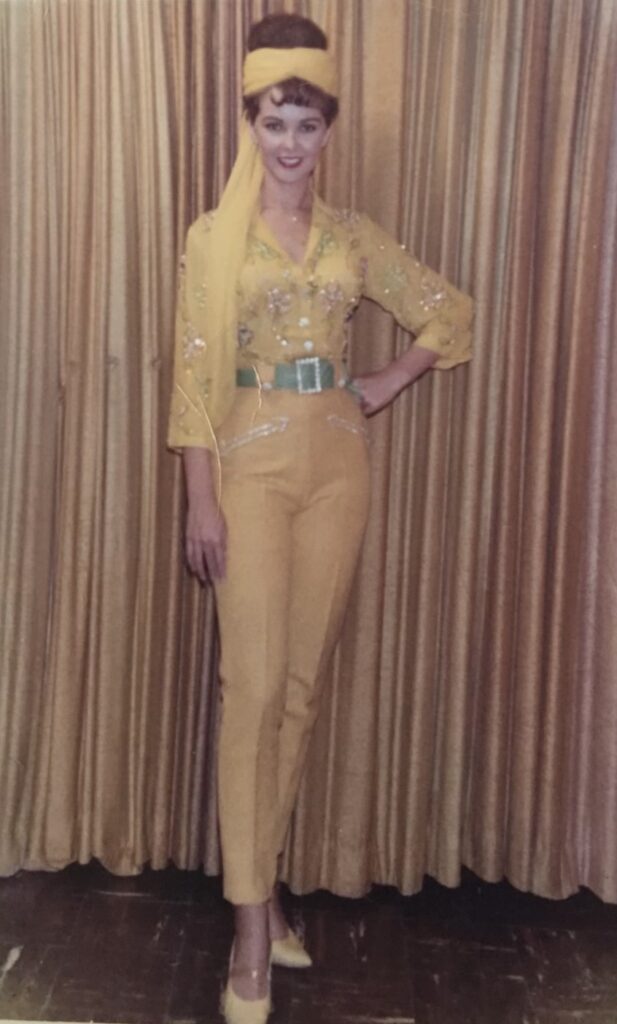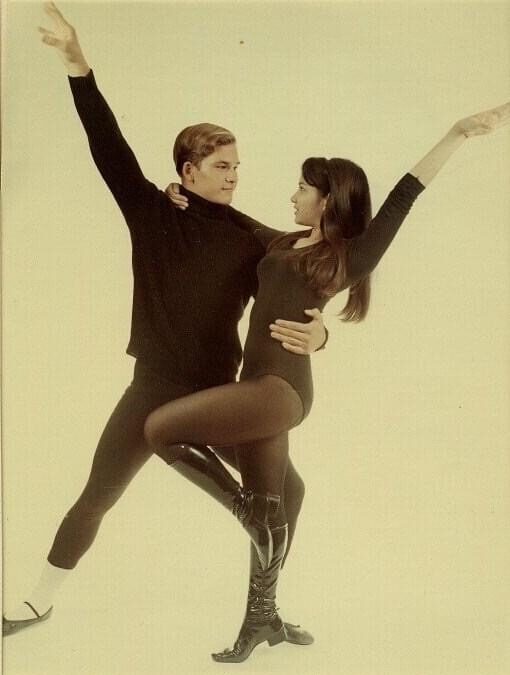By Evie L. Rickard

“It was a life-changing thing to meet her. It was like she had a magic bubble of enthusiasm around her, and you could not walk by without getting some of it on you.”
–Judy Jones, a former student of Patsy Swayze
Judy Jones met Patsy Swayze after Jones won the Miss Houston Pageant in 1959, and Swayze was called upon to choreograph her routine for the upcoming Miss Texas Pageant. At the time, Swayze was recovering from toe surgery and was unable to dance. From her living room couch, Swayze taught Jones the routine, demonstrating the moves with her fingers. Even a physical ailment could not stifle Patsy Swayze’s passion for dance.

Beloved dance teacher and choreographer, Yvonne Helen “Patsy” Swayze (née Karnes), was born in Houston, Texas, on February 7, 1927. At age ten Swayze was hit by a car, which became a pivotal moment in her life. Following the accident, she took her first dance class as a form of physical therapy. This class ignited her passion for dance, leading to her professional training in classical ballet and jazz dance. Swayze “loved all kinds of dance, gravitating to musical theater and teaching,” the Houston Chronicle reported.
While attending high school at Incarnate Word Academy, Swayze met her husband, mechanical engineer Jesse Wayne Swayze. They were married in 1944 and had five children. Each of their children trained under Swayze and became professional dancers and actors.
In the 1960s, Swayze opened her Houston studio, the Swayze School of Dance. The studio was “outfitted with a swimming pool, two dance studio rooms, trampolines, and gymnastics equipment.” Former student, Beth Johnson recalled, “She wanted to have a studio that kids felt comfortable coming to—it was more than just dance.”
Students remember the studio as a family environment. Judy Jones described the studio as “a total blending of students and family.” Another former student, Cookie Joe, said, “The whole time was family time,” adding she remembered slumber parties and sleeping on Swayze’s living room floor.

Swayze fostered discipline and self-confidence in every student. She believed dance training influences every aspect of life. “I love to watch people develop strong bodies and a sense of self-worth,” she told the Los Angeles Times in 1991. “I see coltish, little awkward bodies develop into ethereal beings. To see the child blossom, that’s the thrill of teaching,” Swayze said. The Swayze School of Dance was never about money, according to Judy Jones. “If anyone wanted to take dance lessons, they could just take them. [Swayze] would never turn anyone away.”
While Swayze taught dance, she also gave her students life-long lessons. Beth Johnson recalled Swayze saying, “If you are on stage, no matter what happens, you keep dancing.” Beth explained, “In difficult times, you keep going.” Cookie Joe echoed these sentiments, declaring, “The most valuable lesson she imparted to me was fearlessness and perseverance.”
Beth Johnson remembers a time when Swayze taught her the importance of perseverance. On the night of a performance at Houston’s Shamrock Hilton Hotel, Beth forgot her costume, mistakenly thinking the event was only a rehearsal. When she arrived and saw the other dancers in costume, she was devastated. Her sister rushed to bring her costume to her, but even after she changed clothes, she did not look as put together as the other dancers. Beth recalled Swayze saying to her, “Chin up, it’s going to be fine. You go out there and dance.” To Beth, this was a valuable lesson in patience.
Swayze was known for her ability to see the potential of each student. Cookie Joe was nine years old when she met Patsy Swayze. She had taken dance classes since she was two years old and was cast in a production of South Pacific, which Swayze choreographed. Swayze told Cookie’s mother, “She’s very cute, she’s very talented, but she’s not very good.” Cookie joined Swayze’s school and “realized how much [she] didn’t know, even though [she] had been dancing her whole life.” Cookie studied under Swayze until she left for college and later became a professional dancer and teacher.
In addition to the Swayze School of Dance, Swayze also founded and directed the Houston Jazz Ballet Company. Both organizations were known for their cultural and racial diversity. “She was culturally diverse before it was cool to be culturally diverse,” Cookie Joe recalled. “She was a trailblazer in multicultural inclusion—everybody could dance together.”
At the same time Swayze taught at her independent studio and directed the Houston Jazz Ballet Company, she also taught dance and choreography at the University of Houston (UH) for eighteen years during the 1960s and 1970s. She first became involved with UH through Frontier Fiesta, an annual, western-themed festival where she performed and choreographed dance numbers.
Swayze was also tasked with teaching the Houston Cougar football team basic ballet to improve their agility, balance, and coordination. Judy Jones attended UH in the 1960s and remembered taking Swayze’s class called “Body Movement” in the fall of 1962. This was not a dance class per se—it focused on form, posture, and movement.
To read the full article, click here or Buy Magazines above to subscribe or order a print copy.


 Follow
Follow